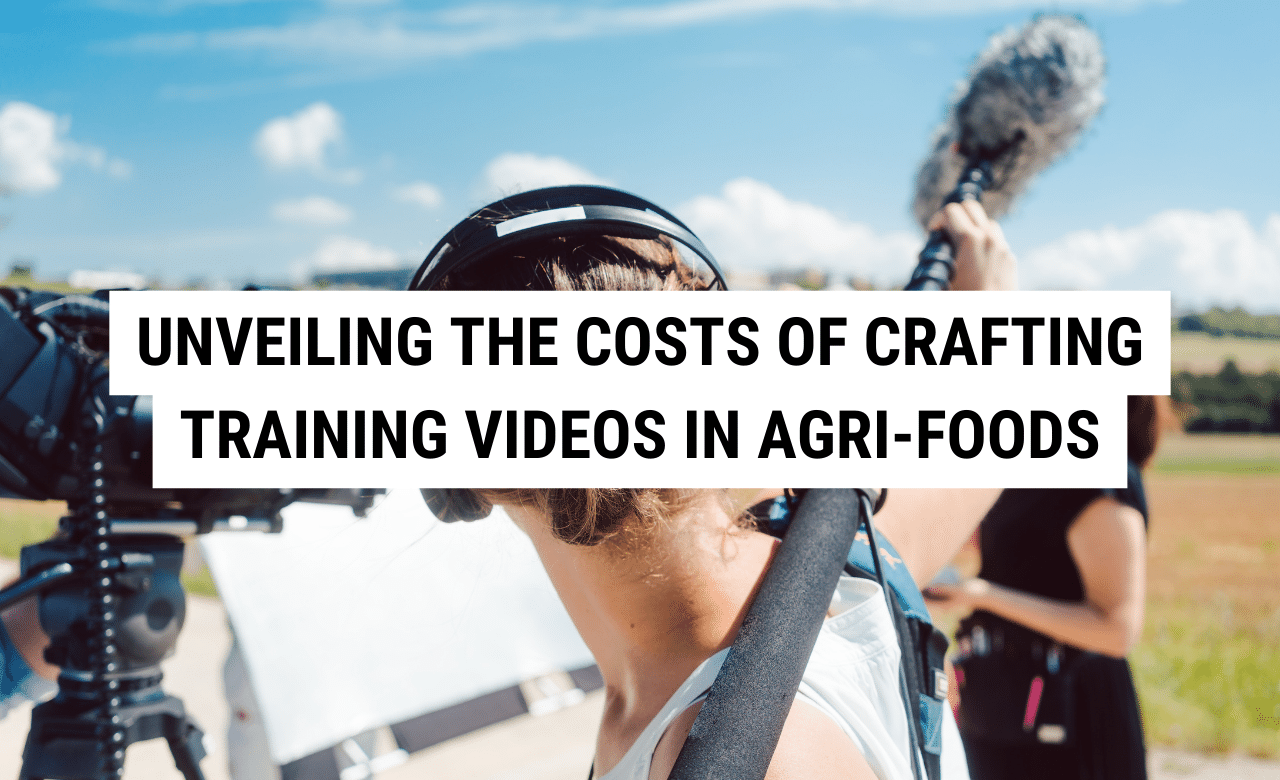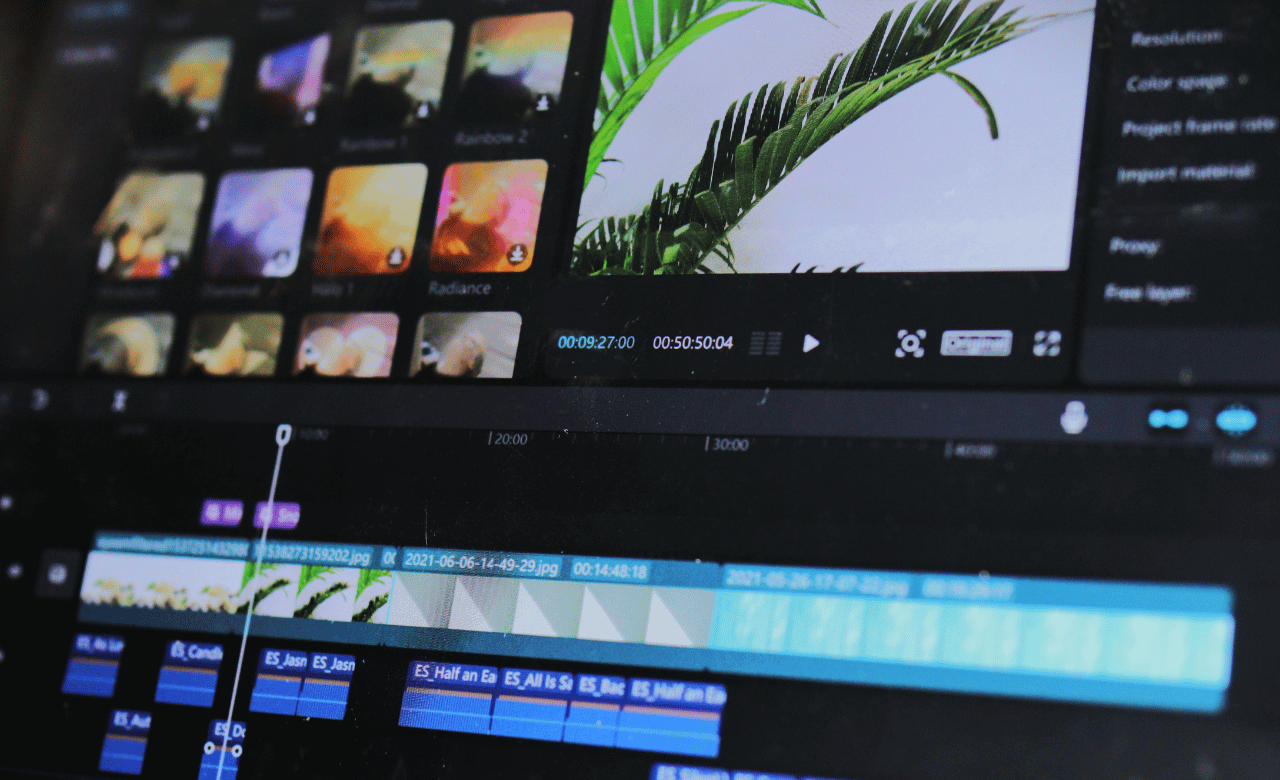Unveiling the Costs of Crafting Training Videos in Agri-Foods

Training videos are the unsung heroes of workplace education, often unifying remote teams and standardising learning experiences. But, behind these valuable assets stand a series of questions that any business, especially within the intricate realms of Agri-Foods production, could ponder over – how much does it cost to create these instructional tools? What’s the best approach to balancing effectiveness and economic feasibility?
Super Motion dives deep into the financial aspects of producing training videos for the Agri-Foods industry, revealing insights that can streamline your decision-making process.
Understanding the Video Production Process Expenses
Before the cameras roll, the true scope of video production costs can seem as mysterious as the birth of a new recipe. At its core, video production breaks down into several key areas, each with its associated expenses.
The Scripting Stage: Beyond Words
Scripting is the backbone of any training video. From pre-production research to the final draft, each step can rack up costs. Professional scriptwriting services typically start at £500 for a 5 minute training segment, excluding revisions or content reforms.
Equipment and Crew Expenditures
The actual filming equipment, and the personnel operating it, are significant expenses. If you intend to the purchase your own equipment, costs can stack up quickly. A high-quality camera, necessary for a polished Agri-Foods video, can range from £1,500 to £15,000. Plus, skilled technicians, set design, and lighting could add another £500 – £2,000 per day.
Post-Production: Crafting the Final Product
Editing footage, adding necessary graphics, and obtaining licences for music can cost upwards of £250 per hour of editing. Post-production expenses are often a hidden but hefty part of the overall production bill.

The Dilemma of Doing-It-Yourself vs. Outsourcing
Many Agri-Foods companies face the dilemma of whether to invest in an in-house video production department or outsource the task to professionals. Both paths have their pros and cons, which greatly affects the total cost.
The DIY Route
Opting for an in-house production means investing in personnel training and equipment. While this provides more control and potential savings in the long run, the initial costs can be substantial, with the need to purchase and maintain high-end equipment and software.
Outsourcing to a Production Company
To improve quality and save you a lot of time, working with a video production company with access to its professional-grade equipment and crew can be beneficial.
When you hire a professional production company like Super Motion, you’re not just paying for the final product. You’re investing in a quicker turnaround, high-quality results, and the peace of mind that comes with knowing your project is in capable hands. Our prices, ranging from £1,000 to £20,000 per minute of finished video, reflect the complexity and resources required to deliver these benefits.
At Super Motion, we’re able to sit at the lower end of this price bracket as we own (and never lease or hire) all our equipment and have highly experienced and multi-talented crew members, meaning we don’t need separate staff to do every task required. We can support our clients with their video projects from pre-production to post-production and offer competitive pricing without ever compromising quality.
Nurturing Talent and Projecting Quality
When deciding on talent, Agri-Foods businesses need to balance the cost of hiring with the quality of education delivered.
Voice-over Artists and Presenters
Professional presenters or actors often demand fees between £200 and £2,000 per day, not including royalties in certain cases. Similarly, skilled voice-over artists charge roughly £250–£500 for every 5–10 minutes of audio.
The Price of Expertise
Skilled educators and industry specialists may be more cost-effective in the long run, providing in-depth knowledge at reduced rates. However, the investment in such specialist training often falls back on the employer.

On Locations and Studios: Where to Shoot?
The decision to film on location or in a studio can significantly impact your budget, especially in the Agri-Foods domain, where authentic environments are a key part of the narrative.
Costs of Location Filming
Renting a location, obtaining necessary permits, and ensuring all health and safety regulations are met, can add a minimum of £500–£1,000 to the production budget.
The Benefits of Studio Simplicity
While studio costs can be as low as a few hundred pounds per day, they don’t always accommodate the authenticity needed for effective Agri-Foods training. The simplicity, however, can be ideal for cost savings if the content allows for a more generic setting.
Equipping for Quality and Monetary Efficiency
The right equipment is essential for capturing training videos that engage and educate. However, investing wisely can save money in the long term.
Cameras, Lighting, and Sound
High-definition cameras, professional lighting rigs, and quality sound equipment are the trinity of video production. A good investment plan can help spread out these initial costs, with some production companies offering financing options to ease the burden.
The Role of Editing Software
Professional editing software such as Adobe Premiere Pro or Final Cut Pro X can cost anywhere from a few hundred to a few thousand pounds. While this is a non-negotiable expense for high-quality video production, the longevity of the software in your toolkit should be a key consideration.

Post-Production: The Multifaceted Polish
Effective post-production adds depth and engagement to training videos but can also significantly inflate costs if not managed wisely.
The Editing Suite
Investing in or hiring an editing suite is necessary for post-production, with costs ranging from £50–£500 a day, depending on the complexity of editing software and the need for additional hardware.
Graphics and Animation
Custom graphics and animations can enhance the learning experience but often come with a price tag. This ranges from simple on-screen text overlays, which are generally less expensive, to intricate 3D animations and custom graphics, which can cost thousands.
Strategies for Cost-Effective Training Video Production
Keeping production costs down without sacrificing quality is an art form in itself. These strategies can help Agri-Foods companies craft effective training videos on a budget.
Reusable Content and Templates
Designing reusable content and using templates can significantly reduce costs over time. By repurposing generic training segments, you can focus your budget on creating new, high-impact content tailored to specific needs.
Maximising Shoot Efficiency
Planning and coordinating shoots meticulously can save both time and money. Capture as much footage as possible in a single shoot day, and ensure all elements (locations, talent, crew, etc.) are aligned to minimise costs.
Simplifying the Shooting Process
Simplicity in your shooting process doesn’t mean compromising on quality. Effective lighting schemes and simple yet functional sets, can provide a professional look at a fraction of the cost of more elaborate designs.

The Long-Term Cost of Effective Training
Training videos offer a long-term value that goes beyond the sum of their costs. They provide consistent, standardised training delivery that can last for years with minimal updates, making them a cost-effective solution.
Measuring Return on Investment
Calculating the Return on Investment (ROI) for training videos involves looking at improved productivity, fewer errors, and long-term employee retention. When these metrics are considered, the initial costs of video production often pale in comparison to the long-term benefits.
Scalability and Standardisation
Training videos can be scaled easily to accommodate a growing workforce and can ensure that standard training protocols are met across the board. This reduces the need for constant retraining and the associated costs.
Conclusion: The Art of Budgeting for Instructional Videos
Balancing the costs of producing training videos in Agri-Foods with the resultant quality and value, is both a business and creative challenge. Understanding the potential financial outlays at each stage of video production is a crucial first step. With a strategic approach, investing in the right resources, and keeping the long-term benefits in mind, Agri-Foods companies can create high-impact training videos that enrich their employees and their bottom line.
If you’re ready to explore the world of training videos, or refine your existing video strategy, Super Motion is here to help. Book a free 30-minute strategy call with us, and take the first step towards cost-effective, compelling training videos that truly resonate.
